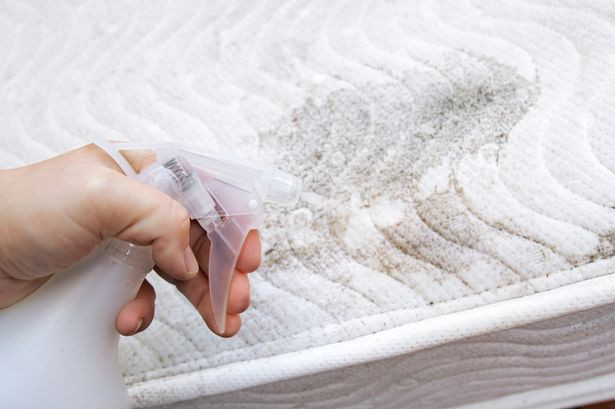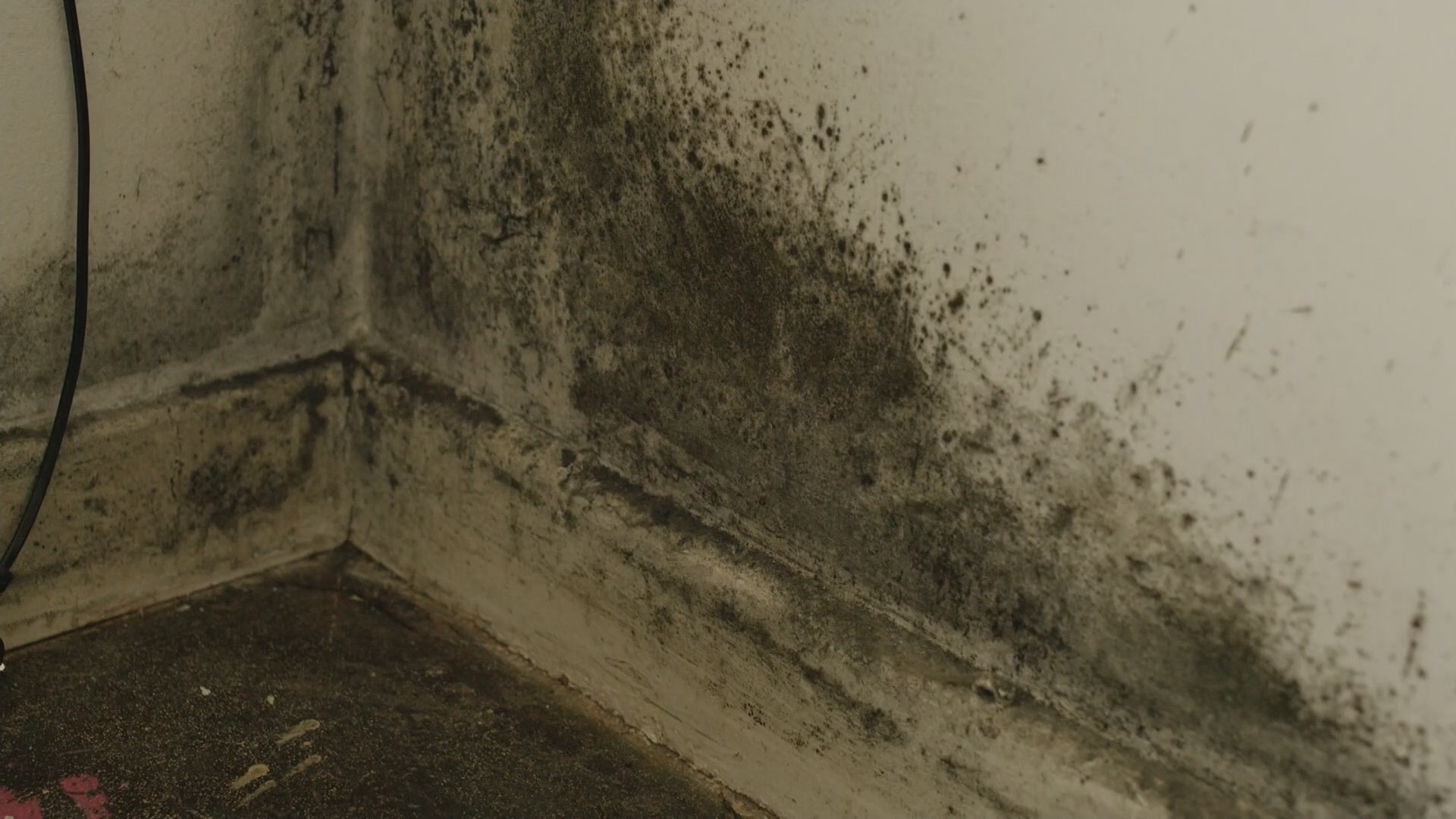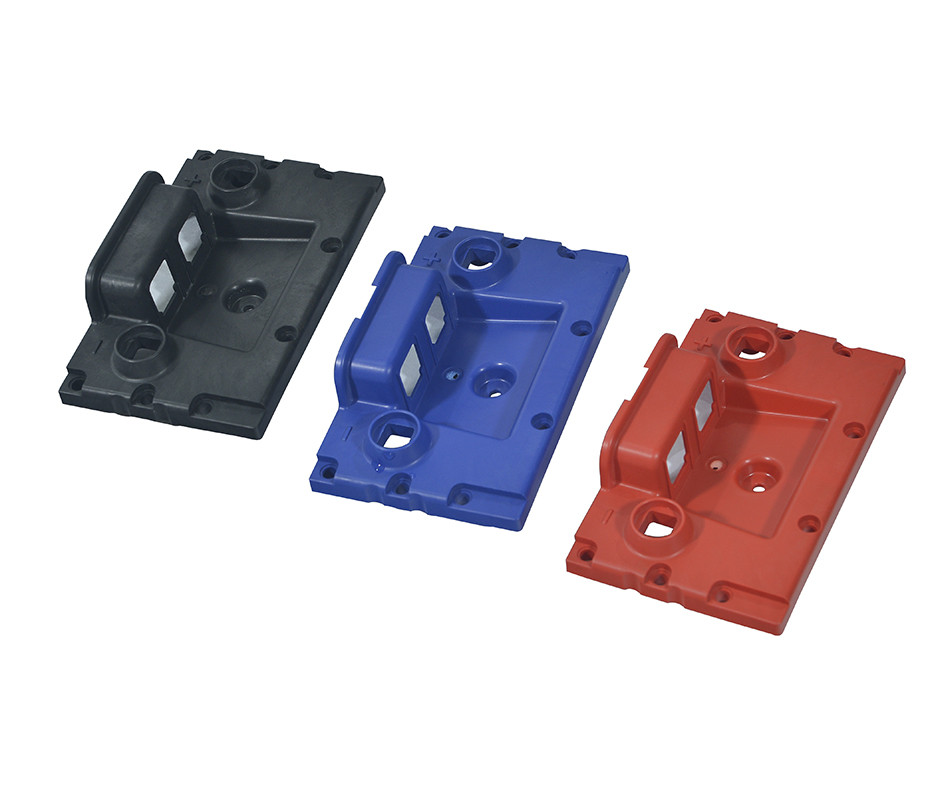Mould is something that nobody wants to take over their home - it’s unsightly and can cause serious health issues if left untreated. Sometimes, it can feel like an impossible task to get rid of it, even though you’ve tried all the best ‘failsafe’ methods like white vinegar, and even mould sprays. However, there’s a German method that costs nothing, and will keep the humidity down in your home, and therefore mould won’t have a chance to take hold.
One Reddit user has explained the concept of 'Stosslüften', which involves opening several windows for a short amount of time to create a draft - and it could rid your home of condensation in minutes. They penned: "In Germany, we have a technique called 'Stosslüften', or 'shock ventilation'. What that basically means is that instead of having maybe one window open all day (which is a huge waste of energy), open several windows all over the house for three minutes, creating a strong draft to exchange most of the warm humid air inside the house with cold air from outside."
"A cool feature about cold air is that it can 'hold' less water vapour. If this relatively dry cold air enters your house, it warms up. Being warmer, it is suddenly capable of taking up some of the extra humidity from inside your house. This might sound a little weird at first but is advocated in schools and so on. I use that technique and it works. Do this several times a day and you should really see a change. Maybe get a device to show you the relative humidity inside your house."
Raymond Galvin, a researcher at the University of Aachen and Cambridge, echoed this when speaking to Politico: "The correct way to ventilate a home is to employ the Stosslüften, or shock ventilation method. You open your windows completely for three minutes if it's windy, five to 10 minutes if it's not."
The Science Behind Stosslüften
The effectiveness of Stosslüften lies in its ability to rapidly exchange warm, humid air with cooler, drier air. This process is based on the principle that colder air has a lower capacity to hold moisture. By creating a draft, you essentially force the warm, moist air out of your home and replace it with cooler, drier air from outside.
This method is particularly beneficial during winter when heating can increase indoor humidity levels. As the cooler air enters your home, it warms up and absorbs some of the excess moisture, reducing condensation and preventing mould growth.
The 'Burping' Method: A Modern Take on Stosslüften
While Stosslüften is a traditional German technique, the concept of 'burping' your house is a more modern, accessible way to achieve the same results. This method involves opening windows for short bursts, usually for around 10 minutes at a time, to allow for a quick exchange of air.
Helen O’Connor, Product Manager at 247 Blinds, explains: "The idea of house burping came from a particular tradition in Germany, 'Stosslüften’ which translates to ‘shock ventilation’ in English, is the act of opening windows for short periods of time, even during the cold winter months, in order to circulate fresh air into the home and prevent mould."
Why It Works
The 'burping' method effectively addresses the root cause of mould growth – excess humidity. By opening windows for short bursts, you allow the warm, moist air trapped inside to escape, replaced by cooler, drier air. This helps to reduce condensation on surfaces, creating an unfavourable environment for mould spores to thrive.
Beyond Mould Prevention
Stosslüften and the 'burping' method offer benefits beyond mould prevention. These techniques can also help to:
- Improve air quality: By exchanging stale indoor air with fresh, outdoor air, you can reduce the concentration of pollutants, allergens, and other irritants in your home.
- Boost your mood: Fresh air can have a positive impact on mental well-being, reducing stress and improving cognitive function.
- Enhance energy efficiency: While opening windows for short bursts may seem counterintuitive, it can actually help to regulate indoor temperatures and reduce your heating costs. By letting in cooler, drier air, you create a more balanced environment that requires less heating to maintain a comfortable temperature.
Targeting Key Areas
Bathrooms, with their high moisture levels from showers and baths, are particularly susceptible to mould growth. Having single-glazed or draughty windows in the bathroom can exacerbate the problem, impacting curtains and blinds too. Helen O’Connor points out: "Bathrooms are the most susceptible to mould growth due to the high moisture levels from steamy showers and baths - a condition in which mould spores thrive. Not only this, bathrooms often have poor ventilation to allow moisture to escape, especially in the winter when keeping windows wide open is not always an option. This can lead to mould on the walls and even on your blinds."
Blinds for Mould Prevention
To combat mould in bathrooms, consider using anti-fungal roller blinds, which are specially coated to resist mould and other common bacteria. Alternatively, opt for faux wooden blinds, which are "water, warp and crack-resistant - meaning frequent cleaning won’t damage them." When fitting blinds, ensure there's a gap between the window and the blind fabric to prevent moisture from getting trapped between the two surfaces.
Everyday Habits that Encourage Mould
Plumbworld, a leading expert in bathroom and kitchen products, has highlighted several daily habits that contribute to mould growth in homes:
Leaving Wet Towels and Bathmats on the Floor
Wet towels and bathmats left on the floor after a shower or bath increase humidity levels, creating a breeding ground for mould spores. Hang towels and bathmats in well-ventilated areas to dry quickly and wash them regularly.
Not Turning On the Fan
An exhaust fan plays a crucial role in reducing moisture levels in the bathroom. During hot showers or baths, steam increases humidity, providing an ideal environment for mould. An exhaust fan removes moist air, minimizing the risk of mould growth. Run the fan during showers and for at least 20-30 minutes after to effectively lower humidity levels.
Ignoring Small Leaks
Even minor leaks from sinks, toilets, or showers can contribute to increased moisture levels in the bathroom, encouraging mould. Promptly fix any leaks to prevent mould and potential structural damage.
Keeping Shower Curtains or Doors Closed
Keeping the shower area closed after use traps moisture, hindering drying and creating a humid environment. Leave the shower door or curtain open to improve air circulation and allow the area to dry quickly.
Storing Too Many Products
Overcrowded shower caddies and corners obstruct airflow and trap moisture, creating hidden niches where mould can flourish. Limit the number of bottles and accessories, clean and dry the areas underneath them regularly to prevent mould growth.
Additional Tips from Cleaning Experts
Lisa Naegele, owner of cleaning company Mainland Housekeeping, suggests leaving the toilet seat up to promote airflow. She says: "To remove and protect against mould in your bathroom, I recommend cleaning your bathroom at least once a week - wiping down and drying wet surfaces like faucets, bathtubs, sinks and shower curtains and scrubbing any existing mould with bleach. This coupled with good air circulation will ward off mould - for bathrooms that don’t get used often (garage bathrooms, etc.) I also recommend leaving toilet seats up to help promote airflow."
Keeping Mould at Bay
By incorporating Stosslüften or the 'burping' method into your routine, along with other mould prevention strategies, you can create a healthier and more comfortable living environment. Remember, fresh air is your best weapon against mould. Just a few minutes of ventilation can make a significant difference in reducing humidity and keeping your home mould-free.
Mouldy Silicone Sealant: A Common Problem
Silicone sealant, while waterproof, is prone to mould growth due to its exposed surface and susceptibility to moisture. Mould can be particularly stubborn on silicone, but a natural remedy exists. Georgia Nunn from Silicone Direct recommends using white vinegar to remove mould from silicone. She explains: "Vinegar is a natural mould killer that unlike other substances does not contain any harmful chemicals."
Vinegar's Anti-Mould Power
The acetic acid in white vinegar effectively infiltrates and dismantles mould spores. Its acidic nature alters the pH level on the silicone sealant's surface, making it inhospitable for mould growth. Vinegar's antifungal properties further aid in eradicating mould quickly.
Using Vinegar to Remove Mould
To remove mould from silicone, combine two parts vinegar with one part water in a spray bottle. Wear protective gear, including gloves, goggles, and a mask. Apply the solution generously to the affected sealant and allow it to penetrate for at least 30 minutes. For stubborn mould, let it sit overnight. Use an old toothbrush or cloth to gently scrub the mould away. Rinse and pat dry with a clean towel.
A Baking Soda Boost
If mould remains persistent, combine vinegar with baking soda. The alkalinity in baking soda dries out and eliminates mould spores. Create a paste with water, vinegar, and baking soda, apply it to the sealant, and let it sit for at least an hour, or overnight for tougher cases. These steps will remove mould stains from your bathroom surfaces.
Preventing Mould in the Future
To prevent future mould growth, ensure your bathroom is well-ventilated. Open a window after bathing to quickly remove steam and moisture. Georgia Nunn recommends: "By opening a window straight after a bath or shower, you can quickly and effectively remove steam and humidity from your bathroom."
Condensation and Humidity: A Double Threat
Many of us are noticing condensation on our windows as we try to cut down on heating costs. Condensation can damage windows and furniture, and it can also contribute to mould growth, posing health risks. Understanding condensation and how to prevent it is crucial.
Condensation Explained
Stephen Hankinson, energy efficiency expert at Electric Radiators Direct, explains: “Humidity is a measurement of the water content in the air. It's usually measured in percentages or grams per cubic metre. Ideally, our indoor spaces should have a humidity level of about 50%. While most of us won’t be able to measure this, there will be some clear signs if your home’s humidity is too high or low."
"If your home’s humidity is too high, you may notice condensation on your windows or mirrors. Condensation happens when there’s too much moisture in the air, and it collects as droplets on a cool surface.”
Solutions to Condensation
There are several strategies to address condensation and high humidity levels:
- Heating and Ventilation: Keeping your home heated prevents condensation by keeping the water in the air in vapor form. It also increases air circulation, allowing moisture to escape more easily. Even opening windows for a short period daily can make a difference.
- Cooking and Drying Clothes: Ventilate your home when cooking or drying clothes inside. Use your extractor fan and place damp laundry near an open window.
- Insulation: Insulation prevents moisture from entering your home and eliminates cold surfaces where condensation can form. Poor insulation can lead to excessive moisture entering your home.
- Radiant Heating: Consider a heating system that uses radiant heat. Radiant heat travels through the air rather than warming it directly, minimizing its effect on room humidity.
Radiant Heating Options
Two radiant heating options are available:
- Infrared Panels: These slim units provide 100% of their warmth through radiant heat and can be installed on walls or ceilings. They are aesthetically versatile, blending in or standing out to complement your home's design.
- Electric Radiators: These radiators provide about a third of their heat through radiation, offering a balance between radiant and conventional heating. They can be a suitable option for those who do not want 100% radiant heat in their homes.
By understanding the causes of condensation and implementing appropriate solutions, you can create a healthier and more comfortable living environment. Remember, a balanced indoor environment is key to preventing condensation and mould growth.



















